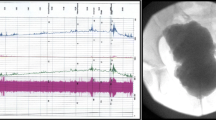Abstract
Purpose of Review
Bladder stones are a prevalent problem in children with neurogenic bladder that impact quality of life and subject patients to multiple procedures. The physiology of bladder dysfunction as well as medical interventions employed to efficiently empty the bladder and lower bladder pressures contribute to the formation of stones. In this paper, we aim to review the literature concerning bladder stone pathophysiology, prevention, surveillance, and surgical management for pediatric patients suffering from neurogenic bladder.
Recent Findings
Historical data has provided the basis of our understanding of pathophysiology and formation of bladder stones in this population. Various prevention strategies seek to counteract the limitations of catheterization and augmentation to limit the likelihood of stone formation. More recent literature has evaluated strategies to limit the morbidity of recurrent stone procedures with minimally invasive techniques.
Summary
Bladder calculi are a common problem in the pediatric neurogenic population due to alterations in physiology and interventions. Current work in prevention and minimally invasive stone removal techniques will inform our practice for these patients going forward.

Similar content being viewed by others
References
Papers of particular interest, published recently, have been highlighted as: • Of importance •• Of major importance
•• Schlomer BJ, Copp HL. Cumulative incidence of outcomes and urologic procedures after augmentation cystoplasty. J Pediatr Urol. 2014;10:1043–50. This retrospective analysis of the Pediatric Health Information System includes over 2800 patients undergoing bladder augment and characterizes rates of bladder stone formation and risk factors.
Douenias R, Rich M, Badlani G, Mazor D, Smith A. Predisposing factors in bladder calculi: review of 100 cases. Urology. 1991;37:240–3.
Weld KJ, Dmochowski RR. Effect of bladder management on urological complications in spinal cord injured patients. J Urol. 2000;163:768–72.
Barroso U Jr, Jednak R, Fleming P, Barthold J, Gonzalez R. Bladder calculi in children who perform clean intermittent catheterization. BJU Int. 2000;85:879–84.
•• Berkowitz J, North A, Tripp R, Gearhart JP, Lakshmanan Y. Mitrofanoff continent catheterizable conduits: top down or bottom up? J Pediatr Urol. 2009;5:122–5. This reference demonstrates the importance of a posteriorly placed catheterizable channel.
Djojodimedjo T, Soebadi DM. Escherichia coli infection induces mucosal damage and expression of proteins promoting urinary stone formation. Urolithiasis. 2013;41:295–301.
DeFoor W, Minevich E, Reddy P, Sekhon D, Polsky E, Wacksman J, et al. Bladder calculi after augmentation cystoplasty: risk factors and prevention strategies. J Urol. 2004;172:1964–6.
Marei MM, Jackson R, Keene DJ. Intravesical gentamicin instillation for the treatment and prevention of urinary tract infections in complex paediatric urology patients: evidence for safety and efficacy. J Pediatr Urol. 2021;17:65-e1.
Kronner KM, Casale AJ, Cain MP, Zerin MJ, Keating MA, Rink RC. Bladder calculi in the pediatric augmented bladder. J Urol. 1998;160:1096–8.
Hayashi Y, Nishimura E, Shimizu S, Miyano G, Okawada M, Nagae I, et al. Sigmoidocolocystoplasty for neurogenic bladder reviewed after 20 years. J Pediatr Surg. 2017;52:2070–3.
• Szymanski KM, Misseri R, Whittam B, Lingeman JE, Amstutz S, Ring JD, et al. Bladder stones after bladder augmentation are not what they seem. J Pediatr Urol. 2016;12:98-e1. This study characterizes bladder stone composition in neurogenic augmented bladders.
Khoury AE, Salomon M, Doche R, Soboh F, Ackerley C, Jayanthi R, et al. Stone formation after augmentation cystoplasty: the role of intestinal mucus. J Urol. 1997;158:1133–7.
van den Heijkant M, Haider N, Taylor C, Subramaniam R. Efficacy of bladder irrigation and surveillance program in prevention of urinary tract infections and bladder calculi in children with an ileocystoplasty and bladder neck repair. Pediatr Surg Int. 2011;27:781–5.
•• Szymanski KM, Misseri R, Whittam B, Amstutz S, Kaefer M, Rink RC, et al. Cutting for stone in augmented bladders—what is the risk of recurrence and is it impacted by treatment modality? J Urol. 2014;191:1375–80. This study established similar rates of recurrence in endoscopic compared to open bladder stone management.
Joseph DB, Baum MA, Tanaka ST, Frimberger DC, Misseri R, Khavari R, et al. Urologic guidelines for the care and management of people with spina bifida. J Pediatr Rehabil Med. 2020;13:479–89.
Husmann DA. Long-term complications following bladder augmentations in patients with spina bifida: bladder calculi, perforation of the augmented bladder and upper tract deterioration. Transl Androl Urol. 2016;5:3.
Roberts WW, Gearhart JP, Mathews RI. Time to recurrent stone formation in patients with bladder or continent reservoir reconstruction: fragmentation versus intact extraction. J Urol. 2004;172:1706–9.
Van Savage JG, Khoury AE, McLorie GA, Churchill BM. Percutaneous vacuum vesicolithotomy under direct vision: a new technique. J Urol. 1996;156:706–8.
• Rhee AC, Cain MP. Percutaneous cystolithotomy in the pediatric neuropathic bladder with laparoscopic trocar access: a modified approach useful for the augmented and native bladder, and continent urinary reservoir. J Pediatr Urol. 2013;9:289–92. Introduced a popular method of percutaneous access for stone management.
• Esposito C, Autorino G, Masieri L, Castagnetti M, Del Conte F, Coppola V, et al. Minimally invasive management of bladder stones in children. Front Pediatr. 2021;8:618756. This reference includes a description and initial results of the robotic cystolithotomy technique.
Author information
Authors and Affiliations
Contributions
C.S., E.L. and R.C. contributed equally in the writing of this manuscript.
Corresponding author
Ethics declarations
Competing interests
The authors declare no competing interests.
Conflict of Interest
All authors report no conflicts of interest.
Human and Animal Rights and Informed Consent
This article does not contain any studies with human or animal subjects performed by any of the authors.
Additional information
Publisher's Note
Springer Nature remains neutral with regard to jurisdictional claims in published maps and institutional affiliations.
Rights and permissions
Springer Nature or its licensor (e.g. a society or other partner) holds exclusive rights to this article under a publishing agreement with the author(s) or other rightsholder(s); author self-archiving of the accepted manuscript version of this article is solely governed by the terms of such publishing agreement and applicable law.
About this article
Cite this article
Staniorski, C.J., Liu, E.K. & Chaudhry, R. Bladder Stones in Pediatric Patients with Bladder Dysfunction: a Review of Pathophysiology and Management. Curr Bladder Dysfunct Rep 18, 346–351 (2023). https://doi.org/10.1007/s11884-023-00714-6
Accepted:
Published:
Issue Date:
DOI: https://doi.org/10.1007/s11884-023-00714-6




